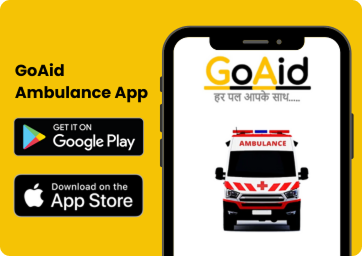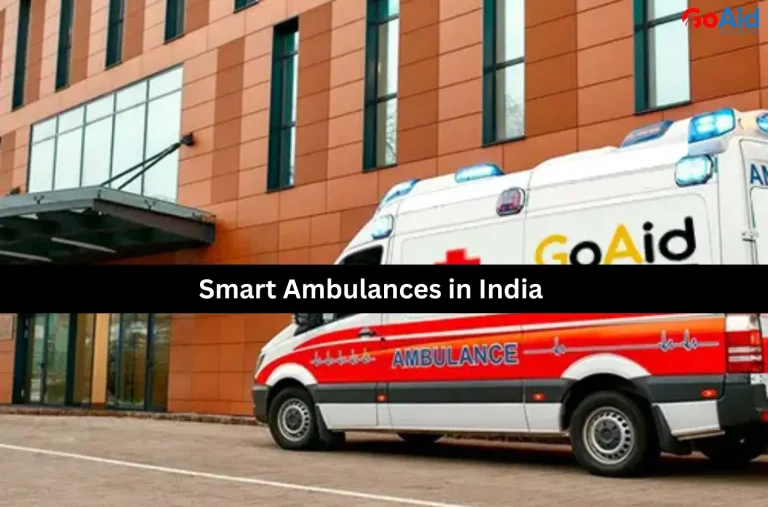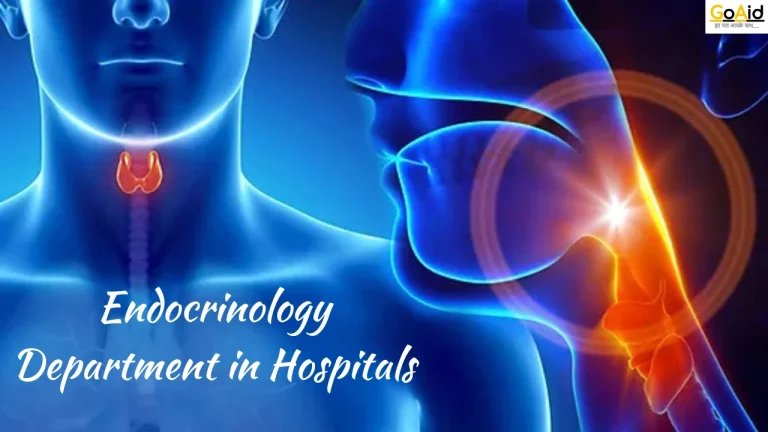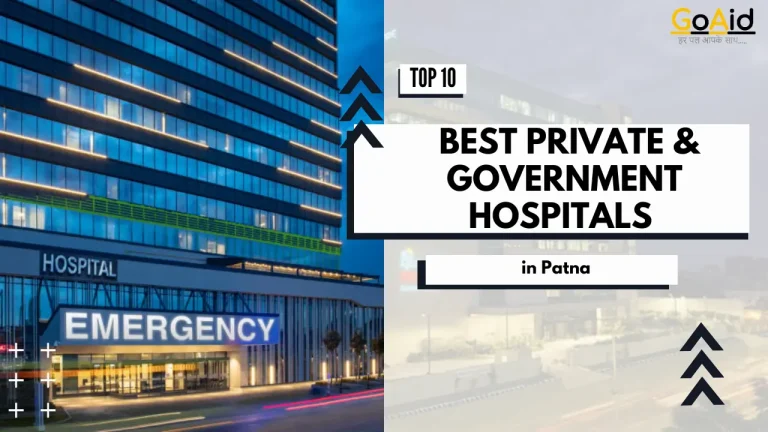IndiaŌĆÖs Smart Emergency Network is a next-gen system that connects ambulances, hospitals, and digital health infrastructure to respond to critical medical cases faster. It integrates GPS-based ambulance tracking, AI-assisted triage tools, real-time hospital bed availability, and telemedical coordination.
This network functions through a public-private partnership model, combining government healthcare policies with innovative private players like GoAid Emergency Services. The aim is to ensure that emergency response times fall under 10 minutes, lives are saved through faster interventions, and every smart city becomes better equipped to handle medical crises through technology, training, and rapid deployment systems.
The Need for Real-Time Medical Emergency Response
IndiaŌĆÖs vast population and rising urban emergencies demand faster, smarter responses to save lives.
1. Traffic Congestion in Cities
Most medical emergencies are delayed due to traffic. A real-time smart ambulance system bypasses congestion using AI-driven route optimization.
2. Lack of Coordinated Hospital Access
Patients often go from hospital to hospital in search of availability. A digital coordination system helps redirect ambulances instantly to the right facility.
3. Delayed Ambulance Arrival Time
Traditional services take 25ŌĆō40 minutes. A smart emergency network, like that used by GoAid, can reduce arrival time to under 10 minutes.
4. Unavailability of Trained Medical Staff in Transit
Smart ambulances ensure real-time connection with doctors, improving care before reaching the hospital.
5. Unpredictable Rural Emergencies
Remote areas suffer from zero connectivity. A smart digital health network ensures early alerts, drone support, and local response coordination.
6. Lack of Data in Emergency Situations
Without instant patient data, doctors lose crucial time. Smart health systems integrate emergency IDs and medical history access in transit.
7. Growing Medical Tourism in India
Foreign patients expect global standards. Smart emergency networks build trust with advanced infrastructure, benefiting tourism and local population alike.
Major Digital Tools Are Transforming Ambulance Services
Digital innovation is redefining how ambulances respond to emergencies. These smart tools help improve response times, enhance patient care during transit, and ensure hospitals are better prepared even before the patient arrives.
1. GPS-Based Ambulance Tracking System
This system allows real-time tracking of ambulances, helping command centers identify the nearest vehicle and dispatch it instantly. With live navigation, ambulances avoid traffic jams and reach patients faster, improving survival rates in time-critical emergencies.
2. Hospital Coordination System
This digital platform connects ambulances directly with hospitals to share live updates on bed availability, specialist readiness, and patient condition. It ensures the patient is taken to a suitable hospital without wasting time on referrals or rejections.
3. Telemedicine Support in Transit
Smart ambulances now feature video calling and diagnostic tools that connect paramedics with doctors during transit. This helps guide first aid, monitor vitals, and start early treatmentŌĆöespecially critical for cardiac, trauma, and stroke cases.
4. AI-Based Emergency Response Algorithms
AI-driven systems analyze caller inputs, predict case severity, and assign the right ambulance type (BLS, ALS, ICU). They also assist in choosing the most efficient route and suggest nearest hospitals based on specialization and distance.
5. Integrated Emergency Health Records (EHR)
Digital systems can now access and transmit a patientŌĆÖs health records during the ride. This gives hospital teams early insight into allergies, conditions, or medical history, enabling better and quicker decisions once the patient arrives.
Key Role of GoAid Ambulance in Smart Emergency Infrastructure
GoAid Ambulance is actively redefining emergency response through its tech-driven approach. By integrating GPS tracking and real-time dispatch, GoAid ensures patients receive help within just 10 minutesŌĆöan essential benchmark for life-saving care.
Its ambulances are equipped with advanced medical tools and digital communication systems, allowing paramedics to coordinate directly with hospitals en route. This minimizes delays in critical treatment upon arrival.
GoAid also contributes to data-driven decision-making by sharing patient updates and transport stats with healthcare partners, improving planning and hospital preparedness.
As part of India’s digital health mission, GoAid supports Smart City projects by offering scalable, high-speed emergency coverageŌĆöbridging the gap between need and timely care.
Government & Private Partnerships: Building Together
Government and private sector collaboration is shaping IndiaŌĆÖs new era of emergency medical infrastructure. These partnerships help build scalable solutions that reach both urban and rural populations.
By combining the policy framework and funding power of the government with the agility and innovation of private players like GoAid, the emergency response system becomes stronger and more responsive.
Such collaborations lead to better-equipped ambulances, trained paramedics, and enhanced technology deployment, including GPS tracking and real-time hospital coordination.
GoAid has partnered with several government agencies to extend quality ambulance services in industrial zones, highways, and remote clusters. These initiatives reduce the burden on public health systems.
With shared goals and aligned execution, government-private partnerships accelerate India’s move toward a smart, integrated emergency care ecosystem.
GPS & App-Based Tracking ŌĆō How itŌĆÖs Helping Rapidly
Modern ambulance services rely heavily on GPS and app-based tracking systems to reduce response time and ensure patient transparency during transit. These tools are key in building IndiaŌĆÖs smart emergency medical ecosystem.
1. Live Location Sharing
Allows hospitals to prepare in advance by tracking exact ambulance location in real-time.
2. Traffic-Based Route Optimization
Helps the ambulance avoid congested roads and reach patients faster by auto-selecting the shortest path.
3. App-Based Booking Systems
Enables users to call ambulances instantly, without waiting in long queues or relying on manual systems.
4. ETA Notifications to Families
Keeps patient relatives updated with estimated arrival time and ambulance progress.
5. Central Command Integration
Connects multiple ambulances through a control room, streamlining large-scale coordination during crises.
GoAid Connecting Smartly with Top Hospitals in India
GoAid Ambulance is forming critical links between patients and IndiaŌĆÖs top hospitals through smart coordination. Every ambulance is digitally connected to hospital emergency teams, ensuring real-time updates during patient transit.
This smart integration allows hospitals to access live vitals, location, and emergency notes before the patient arrives. As a result, doctors prepare beforehand, drastically reducing golden-hour delays.
GoAid collaborates with both public and private hospitals across metros and Tier-2 cities, creating a reliable nationwide medical grid. These connections span trauma centers, ICUs, and multispecialty units.
The digital system also supports instant hospital allocation during on-road emergencies, directing ambulances to the nearest equipped facility. This ensures no time is wasted in routing decisions.
By connecting to hospitals smartly, GoAid is not only improving patient outcomes but also reducing hospital burden by automating logistics and care coordination.
Conclusion to the Smart Emergency Network in India
In conclusion, we have provided you all the details about how, with a collaborative approach, GoAid is helping build IndiaŌĆÖs first smart emergency network. Through GPS tracking, app-based systems, government-private partnerships, and real-time hospital connectivity, emergency care is becoming faster and more efficient.
GoAidŌĆÖs integration with top hospitals and industries is playing a key role in reducing response time and saving lives. This smart infrastructure isnŌĆÖt just a technological advancementŌĆöitŌĆÖs a life-saving evolution for India. As more regions adopt this model, the vision of a connected, responsive, and inclusive emergency medical system is becoming a nationwide reality.
FAQs related to the Smart Emergency Network in India
Question 1: What is a smart emergency network in India?
Answer: A smart emergency network uses digital tools like GPS, mobile apps, and hospital integrations to speed up ambulance response and improve patient care coordination.
Question 2: How is GoAid contributing to emergency services in India?
Answer: GoAid provides GPS-enabled ambulances, app-based bookings, and hospital-linked systems that enable rapid response and transparent communication during emergencies.
Question 3: Which technologies are used in smart ambulance services?
Answer: Smart ambulances use live tracking, route optimization, central command control, patient data sharing, and mobile apps for bookings and updates.
Question 4: Are smart ambulance services available in rural areas?
Answer: Yes, GoAid is expanding smart ambulance services to Tier-2 and rural regions through public-private partnerships and strategic hospital connections.
Question 5: Can I book a smart ambulance through an app?
Answer: Absolutely! GoAid offers app-based ambulance booking, allowing users to request services instantly and track the ambulance in real-time.
















